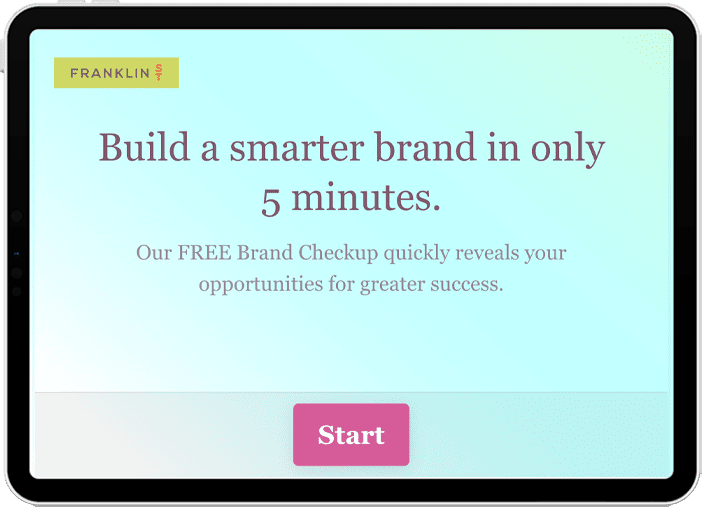5 Steps to Drive Volume Through Differentiation:
- Look inside for what makes your services unique.
- Understand consumer perceptions are valid…even if they’re false.
- Are all the players in your market saying something similar?
- Create patient experiences that drive choice.
- Get your marketing communications to work harder.
BONUS:
Direct-download our surgery campaign creative brief example.
Many health care providers are chosen because of their proximity to home or work. This is often the case in urgent or emergent situations but is also becoming more common in retail health. CVS, Walmart, Walgreens, urgent care, and others understand that convenience is a key driver of choice so they leverage their retail locations.
However, proximity is not a sustainable advantage for most.
If proximity is the driving force behind most of your patient volume, you may be vulnerable to competition that is perceived to offer more value in your market or region. In a competitive market where consumers, particularly commercially insured consumers, have multiple choices, proximity is not a sustainable advantage for key services lines.
As the perceived risk of a procedure increases, consumers are likely willing to travel to a provider that delivers the greatest confidence, comfort, and peace of mind. Brands and service lines that are well-positioned and differentiated in their markets often have the luxury of more patient loyalty, greater market share, and better margins.
If you aren’t sure why your patients choose your health care brand, or you already know proximity is the primary driver, this may be the time to step back and reevaluate your brand and marketing strategy. This may sound like a daunting task but there are clear steps for developing a compelling, unique, and authentic reason for consumers to choose your brand over others for their care.
1. Look inside for what makes your services unique.
It is important to start your process by studying the genuine strengths and unique points of differentiation within your organization.
Some of these strengths can be gleaned from readily available data such as patient satisfaction, employee engagement or clinical outcome data. They may come from unique capabilities and expertise in key service lines.
It is important to understand what key stakeholder groups believe are the unique strengths of your brand’s organization. Include a variety of internal audiences from different service areas in your process in order to gain diverse perspectives and insights from what might be siloed otherwise. The combination of these sources, concrete data and internal perceptions, and credible aspirations tells the story of both where the organization has been and where it’s going.
There are a variety of tools that can be used to gain insights into internal audiences. Individual interviews are typically used for executive leadership, while workshops, internal focus groups, and surveys help gain input from a wide variety of stakeholders.
While the aspirations of internal audiences are part of your story, they have to be backed by credible evidence that these strengths are true and can be delivered. Consumers are savvy enough to see through a brand that is not authentic.
Why It Matters:
- Internal audiences need to deliver your unique difference. If they have an opportunity to weigh in, they are more likely to buy-in.
- Many organizations are siloed and don’t realize the unique strengths of other service areas within the organization. Broader inclusion in the process will reveal a more comprehensive list of unique strengths.
2. Consumer perceptions are valid even if they’re false.
While the internal view of your brand is critical for success, so too are the customer attitudes and beliefs about your brand relative to competition. In reality, your brand position exists in the hearts and minds of your audiences. If your audiences don’t believe your health system provides the unique benefits and value you claim, you haven’t earned the position in the market. It may be true and factual, but to be earned in the marketplace, consumers have to believe it.
Consumer research is the best way to understand what drives consumer choice for your brand versus your competition. While there are many new technologies and methods for conducting research, they still fall into essentially two categories, qualitative and quantitative.
- Qualitative research such as in-depth interviews, ethnographic studies, digital bulletin boards or various types of focus groups helps you learn the range of current perceptions for each brand in the market but also why these perceptions are held. You can also learn what is important when consumers are choosing their hospital or provider even as they are making those choices in some cases. The insights from qualitative research are especially valuable in tapping into the emotions of the consumer. In reality, emotions play a substantial role in how most consumers make health care choices.
- Quantitative research such as surveys with a sample size of 200 or more can be used to project attitudes and behaviors onto your market. Quantitative research also provides a variety of analytical tools that help visualize data and provide richer insights. These tools can show which brands are most associated with specific attributes that are important in selecting a hospital or health system. Image mapping allows you to identify opportunities to ‘own’ attributes in the market that are not owned by any competitor, or which attributes you need to build stronger associations in order to be chosen by each customer segment.
These research tools also help you predict which brand positioning scenario will be most compelling to your audiences. It is common to form potential positioning scenarios based on internal audience input, then test these to get consumer feedback as to which positioning alternative is most compelling, unique, and credible. Many organizations conduct both qualitative and quantitative research to inform their brand positioning decisions.
Why It Matters:
- Many clients are surprised by what consumers actually think and believe about their brand. Most don’t like surprises.
- Your brand position really only lives in the hearts and minds of your audiences.
3. Are all the players in your market saying something similar?
While consumer research will show you which competitors own which attributes, it is still important to study your competitors’ communication and messaging. In order to differentiate your offerings, you must communicate differently and create different experiences than your competition. Your messaging, brand personality, voice and creative expression should be unique to the brand position you want to own.
There are several ways to evaluate your competition’s communication. Their paid advertising, social media platform interactions, and website provide a good indicator of the brand promise they are making, their creative expression, and brand personality. We often build a spreadsheet with key messages, personality traits, and specific promises and taglines for each competitor in their market. This approach engages the left and right sides of your brain and helps chart your path toward differentiation. Your communication should be designed to earn the brand position you aspire to own in the market.
Why It Matters:
- Health care communication often feels like a sea of sameness.
- Building brand equity requires distinction which must be purposefully designed.
4. Create patient experiences that drive choice.
One of the most important aspects of earning your brand position is to deliver it consistently with patients at every touchpoint throughout their journey with you. This may be easier to plan around each service line or each type of care to make the experience relevant and tangible.
While communication is often the purview of marketing and communications departments, creating patient experiences requires working with operations, service line leaders, and other departments within the organization. If you have buy-in from senior leadership and internal stakeholders on what you want your brand to be known for, it will be easier to get buy-in on creating unique service delivery experiences.
While it does not always happen, marketing should have a seat at the table for these experience design exercises and cross-functional workshops. Conducting and sharing market research can earn marketing the role of the voice of the consumer. Sharing consumer quotes from qualitative research or quantitative findings of consumer perceptions can help earn the respect and trust of service line leaders.
Why It Matters:
- Experience trumps communication every time.
- What you promise consumers won’t be trusted if experiences don’t live up to it.
5. Get your marketing communications to work harder.
Once you have defined your optimal brand position in the market, it is important to start your marketing campaign internally first. Your internal audience is the most important in delivering on the brand promise and bringing credibility and authenticity to the brand. Internal marketing helps engage employees by inspiring them to make a strong emotional connection to the services and experiences that will set you apart.
If you have followed the above steps you should be well-positioned to develop your consumer-facing campaign. We begin with a creative brief that paints a picture of current consumer beliefs and perceptions. (See example of completed creative brief.) We then specify the desired beliefs we want consumers to believe after seeing the campaign. In order to shift the consumer from their current beliefs to our desired beliefs, we provide factual reasons to believe. These reasons to believe are often found in the information gathered from internal audiences or in the experiences you create that solve an unmet need in the market.
This creative brief can serve as the foundation for the entire PESO (Paid, Earned, Shared, and Owned) communication plan. To maximize the effectiveness of every dollar spent, it is important to leverage every channel of communication to support your unique benefits that drive choice.
Why It Matters:
- Employees often get excited when they see a campaign that is about to launch. Conversely, they may feel disrespected if they first see the campaign in public facing media channels.
- Integrating messaging throughout the PESO channels ensures consistency of the message and helps to build equity faster.
This process will deliver an effective and well-differentiated brand position. Remember, if you are doing a brand refresh, the most effective brands have a position that is very compelling, unique, and true. They are unified internally to deliver on this brand promise and earn the position in the market. And they are consistent in messaging throughout all touchpoints and channels.
While this article shows five steps, that does not mean it can be done in a week. Going through this process for a service line can take several weeks while differentiating the entire brand will likely take several months.
If you are working through this process and would like to reach out for some advice or assistance, please feel free to call or email us at hello@franklinstreet.com.


